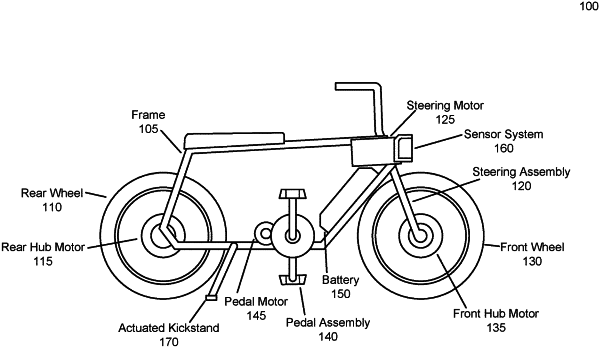| CPC B62M 6/65 (2013.01) [B60L 7/18 (2013.01); B60L 15/2009 (2013.01); B60W 10/08 (2013.01); B62J 45/412 (2020.02); B62J 45/413 (2020.02); B62J 45/4151 (2020.02); B62J 45/4152 (2020.02); B62L 1/00 (2013.01); B62L 3/00 (2013.01); B62L 3/02 (2013.01); B62M 6/45 (2013.01); B62M 6/50 (2013.01); B62M 6/60 (2013.01); B60L 50/60 (2019.02); B60L 2200/12 (2013.01); B60L 2240/423 (2013.01); B60L 2240/465 (2013.01); B62M 6/55 (2013.01)] | 20 Claims |

|
1. An electronic bicycle, comprising:
a wheel coupled to a wheel hub motor, wherein the wheel hub motor is configured to rotate the wheel;
a battery coupled to the wheel hub motor, wherein the battery is configured to provide power to the wheel hub motor;
a processor;
a sensor coupled to the processor; and
a non-transitory, computer-readable medium comprising instructions that, when executed by the processor, cause the processor to:
receive sensor data from the sensor;
determine a coefficient of friction for the wheel based on the sensor data;
determine a maximum torque that can be applied to the wheel by the wheel hub motor based on the coefficient of friction;
receive a user input signal indicating a user intent to decelerate the electronic bicycle;
determine a target torque to apply to the wheel based on the user input signal;
responsive to a magnitude of the target torque being greater than a magnitude of the maximum torque, apply the maximum torque to the wheel by the wheel hub motor.
|